Table of contents
What is the mythological Tarot?
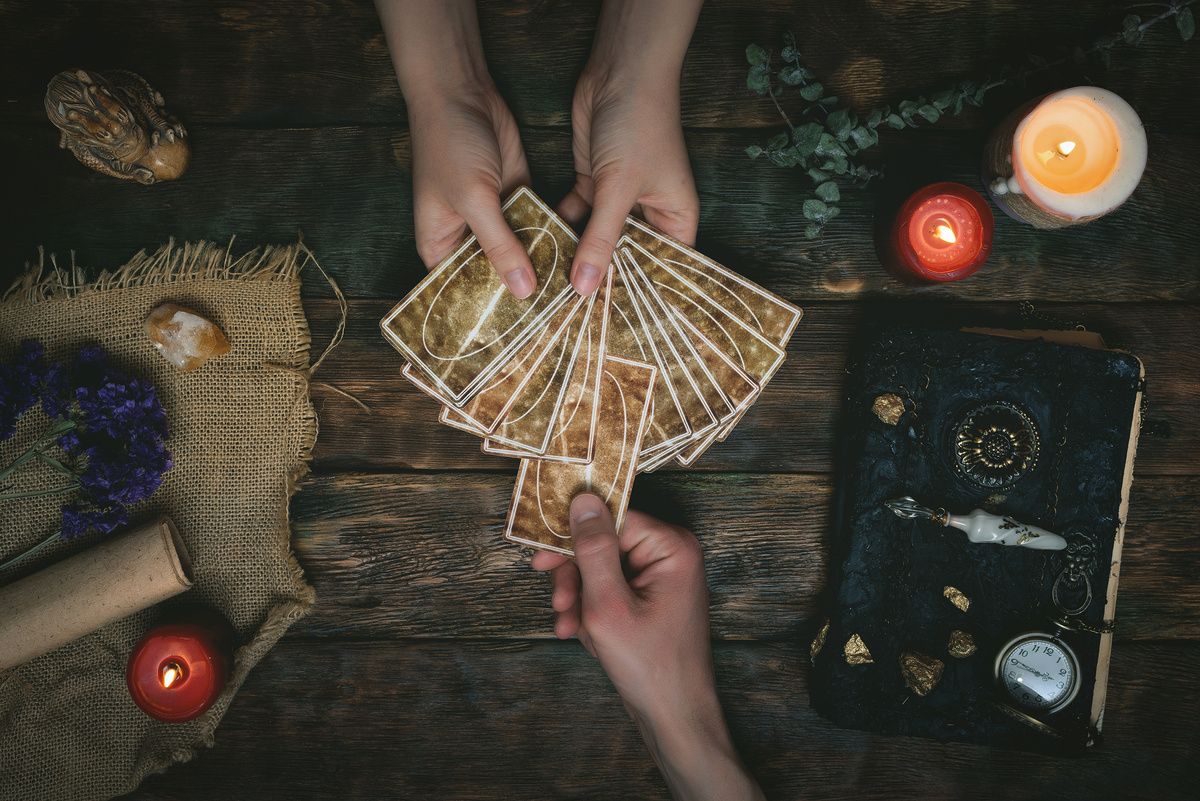
The mythological Tarot is an adaptation of the medieval images, used in traditional tarots such as Marseille, to passages, myths and characters from Greek mythology. It is one of the most sold and used cards in the world and, as well as the other types of Tarot, requires serious study by those who practice it.
This deck brings a series of innovations and many symbolisms, while preserving the traditional structure of the Tarot of Marseille. The Mythological Tarot, like the other tarots, has 78 blades, each one representing identities related to basic human feelings.
Follow now the fundamentals of the mythological Tarot, as well as how to consult them. See also more details about the major and minor arcana and how this deck can help you make more assertive decisions.
Basics of Mythological Tarot
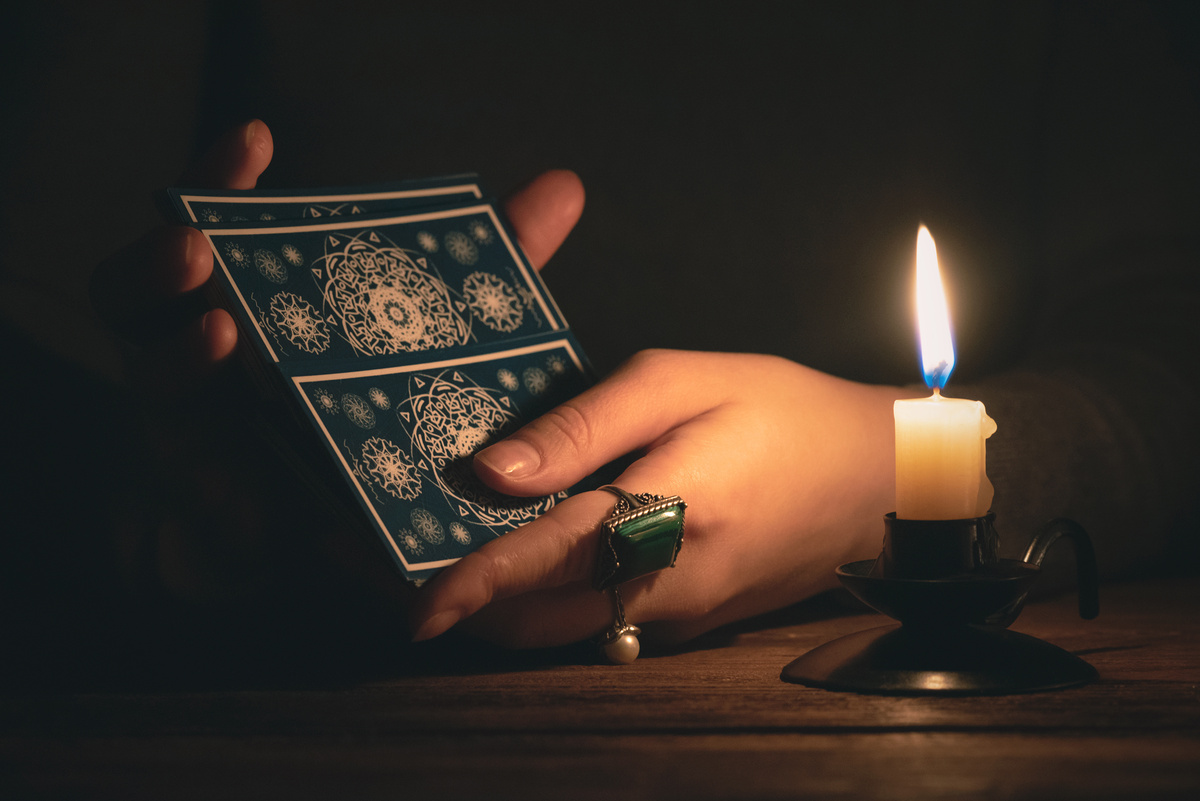
For a better understanding of the mythological Tarot, see below what are the origins, the goals and the benefits of this version of the deck, and that has become a success around the world.
Source
Launched in 1986, the Mythological Tarot became a bestseller, being translated and sold worldwide. Considered at the time as an innovation in the Tarot world, this mythological version was created by the American astrologer Liz Greene, in partnership with the artist Tricia Newell and the tarologist Julliette Sharman-Burke.
The 78 cards of this Tarot are based on the stories of the Greek gods, with their designs related to the Renaissance period. Such stories correspond, poetically, to patterns and experiences linked to human relationships.
Objectives
The mythological Tarot, through the stories of the Greek gods and also by the archetypes and symbols found in them, works as a mirror of human experiences and sensations. In this way, we have this Tarot as a tool that allows us to glimpse what the rational mind does not access, and that is demonstrated by the cards.
In decisive moments, of uncertainty or dilemmas, the characters of the mythological Tarot act as counselors, pointing a direction in a deeper sense of ourselves.
Benefits
It is believed that it is impossible for someone to live in fullness and harmony when the unconscious and subconscious are not in harmony.
In this sense, the greatest benefit of the mythological Tarot is precisely self-knowledge, the harmonization between conscious and subconscious through the interpretation of the signs brought by the characters, archetypes, symbols and myths contained in the cards. Thus, there is a greater balance in decision making.
Other benefits of the mythological Tarot are the identification of certain actions that can help your life, as well as discovering the roots of situations.
How to consult the mythological Tarot?
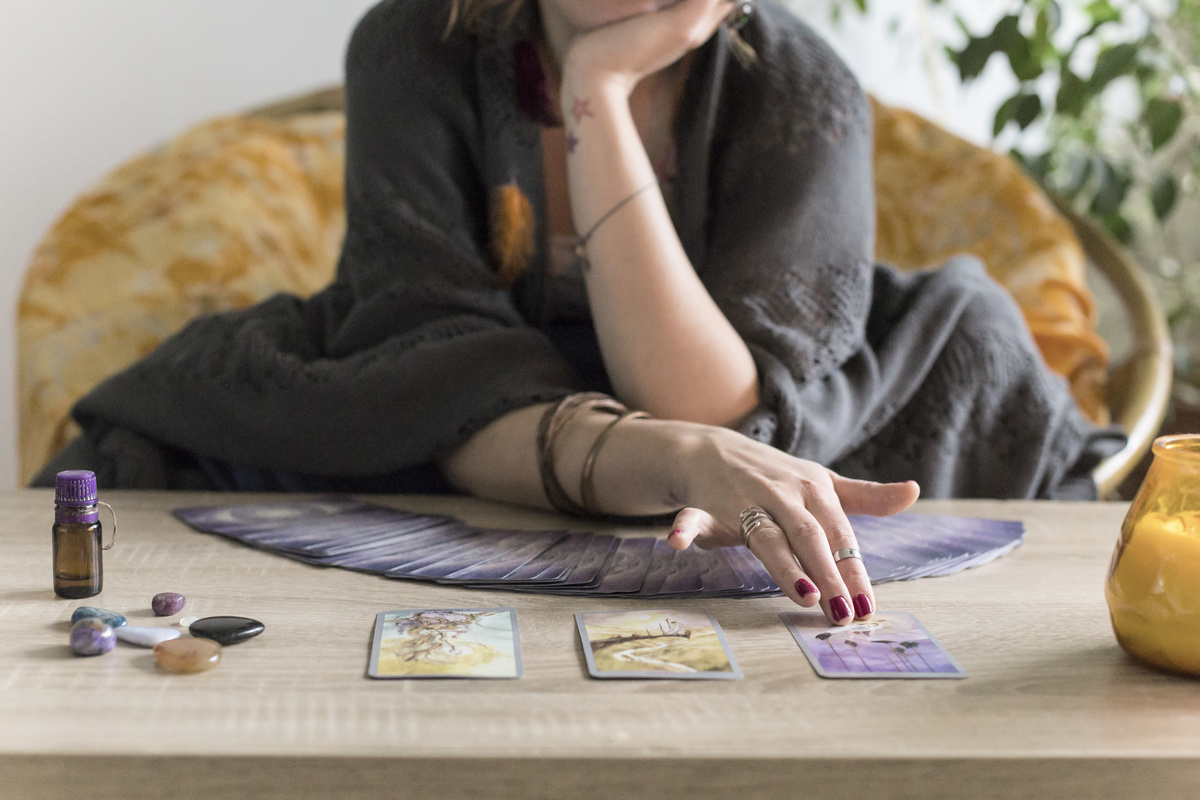
When consulting the mythological Tarot, one should keep in mind the subject or question pertinent to the moment, and by shuffling and drawing the cards, the interpretation will bring you valuable guidance.
The answers and guidance will come in the form of figures, which refer to myths and characters from mythology. Check below how the understanding of the historical and psychological approaches of the mythological Tarot are essential for a quality consultation.
Historical approach
Even coming from antiquity and from a long non-existent civilization, the Greek myths continue to be eternal and alive narratives. It is worth mentioning that, regardless of the time or culture, all peoples have made, and still make use of the most varied myths, relating them to the most diverse facets of the human essence.
The historical approach of the mythological Tarot seeks to explain the initial intentions and origins of the card, based on Greek myths and characters. Regardless of the references we have, the mythological Tarot cards evoke our primitive memory, which is linked to folklores, myths and legends.
This factual, concrete, historical approach is made somewhat easier with a deeper knowledge of Greek mythology in general.
Psychological approach
As supernatural as it may seem, the psychological approach of the mythological Tarot is actually grounded in archetypes - that is, examples that serve as models for drawing comparisons in relation to some situation.
Closely linked to the human psyche, the psychological approach reflects influential archetypal patterns already existing in a person's life. It is a kind of secret or hidden history that we cannot reveal, and which are shown by the figures present in the cards.
Major Arcana: The Journey
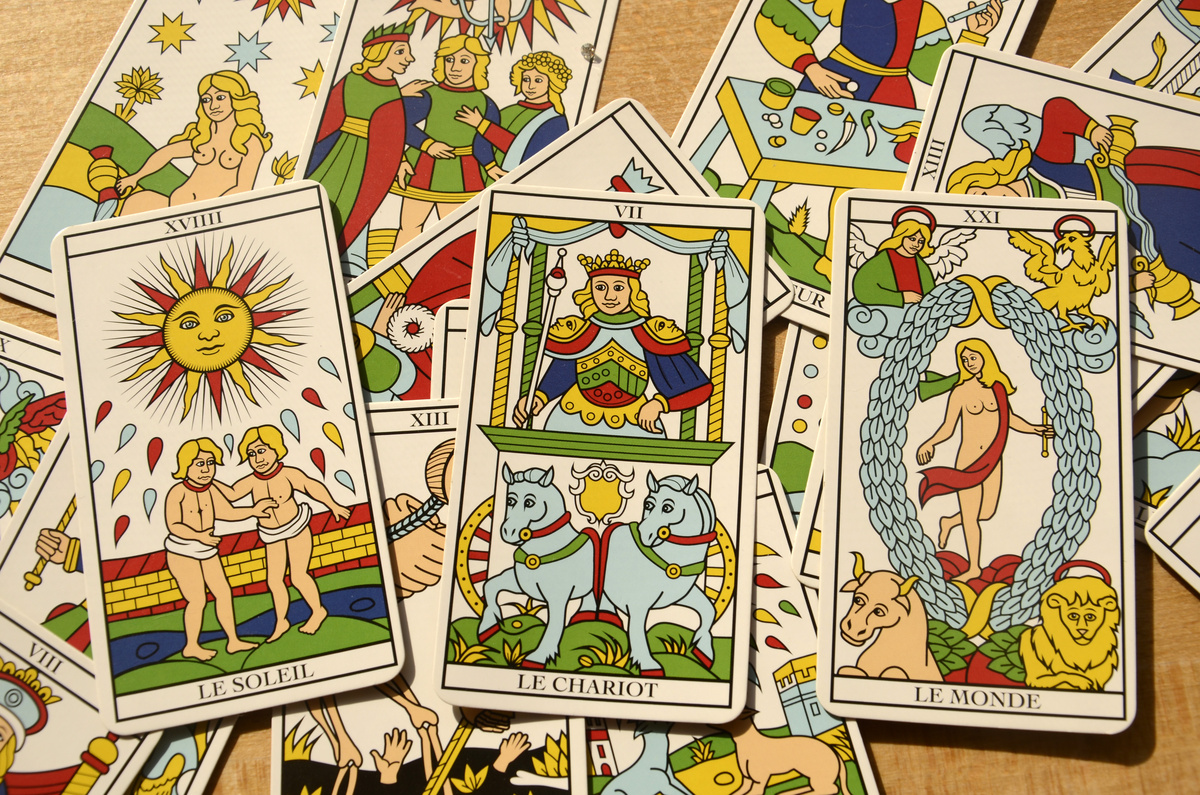
In the mythological Tarot, the major arcana are represented by images that refer to distinct phases of a journey. This journey represents the life that every human being makes, from birth to death. It would be the journey of the Madman, first card of the major arcana, represented by the god Dionysus in the mythological Tarot.
Because it is a dynamic course, this journey is considered a spiral of phases that can go through the same issues, always with a higher degree of maturity.
Composed of 22 cards, the major arcana should not be considered totally positive or negative during a consultation. The interpretation should be of higher or lower levels of difficulty before some situation or doubt consulted through the cards.
Check below how the major arcana of the mythological Tarot portray the childhood, adolescence and maturity of an individual. See also how crises, transformations, achievements and closing cycles are addressed by this specific type of Tarot.
Childhood
In mythological Tarot, childhood is the phase represented by the cards of the Magician, the Empress, the Emperor, the Priestess and the Hierophant. The magician, in mythological Tarot, is represented by the god Hermes, dressed in white tunic and red cloak.
This arcane brings a sense of creative abilities and gifts that have not yet manifested. It symbolizes new and untapped opportunities, making it clear that abilities not yet developed will be possible during the journey.
In turn, the Empress card is represented by the goddess Demeter, goddess of fertility and protector of helpless creatures. It carries a sense of welcome, of creation and that, if planted in fertile ground, ideas bear good fruit.
The arcane of the emperor is represented by Zeus, father of all the gods in Greek mythology. It represents protection and dominion for being the god of the gods, but also carries a sense of rigidity and discipline.
The Priestess is represented by Persephone, queen of the underworld and keeper of the secrets of the dead. It has the meaning of intuition and introspection, with a symbolism of self-knowledge about the darkness and the lights that each one carries within himself.
The Hierophant in the mythological Tarot is represented by Chiron, the king of the centaurs. He symbolizes spirituality on earth and its right aspects and values, being, in Greek mythology, the responsible for teaching them to the princes of the earth.
Adolescence
The transitional phase, often confusing and turbulent, between childhood and maturity is represented by the letters Lovers and The Car.
The arcane of the Lovers is represented by the dilemma of Prince Paris who, in Greek mythology, must choose one of three female divinities. Thus, the arcane of the Lovers symbolizes impasses and indecisions typical of adolescence, whether in love or any other aspect of human life.
The card The Chariot is represented by the figure of Ares, god of brute force and war, who faces battles with the intention of winning. This card symbolizes initiative in undertakings with the intention of obtaining success. It also brings a reflection on self-control to avoid unnecessary conflicts.
Maturity
In the mythological Tarot, the mature and balanced phase of existence is represented by the arcana of Justice, Temperance, Strength and Hermit.
The Justice card is represented by the figure of the goddess Athena, warrior deity, but also the goddess of wisdom and strategy. It brings a symbolism that, many times, one wins not by brute force or aggressiveness, but by wisdom in the face of situations.
The Temperance card is represented by the goddess Iris, a deity worshiped by both gods and mortals, being the messenger between heaven and earth in Greek mythology. This card is loaded with a sense of balance and middle ground, giving a message that, many times, neither 8 nor 80 are the best postures to adopt.
The myth of Hercules versus the Nemean lion represents the card of Strength in the mythological Tarot. This arcane brings a sense that wisdom overcomes physical strength, since in this myth, Hercules defeats the lion using the strategy of surprising him in a cave, and not just in brute force.
For the Hermit arcane, we have the god of time Kronos as a representative. It brings a sense that nothing remains unchanged, and that there is time for everything in life. The return to one's own individuality, in order to seek wisdom in ourselves, and not only from external sources, is one of the symbologies of this card, which brings an archetype of wisdom and intelligence.
Crises
There is no journey without sudden changes, losses or crises. In mythological Tarot, these aspects of life are represented by the cards of the Wheel of Fortune, the Hanged Man and Death.
The mythological representation of the arcane Wheel of Fortune is made by the Moiras, or Forks - the 3 goddesses of fate in Greek mythology. They are responsible for spinning fate, unable to be controlled even by the god of the gods, Zeus.
This card symbolizes the unpredictability of life and the surprises, good or bad, that fate brings us. Dealing with the unexpected, taking advantage of the good opportunities and dealing well with the unexpected bad situations, is the main symbolism of this arcane.
The arcane of the Hanged Man is represented by Prometheus, who was punished by Zeus for having given the power of fire to man. This arcane brings a sense of painful sacrifices that we make to achieve greater things, as well as knowing your priorities and having resilience when giving up certain things for the sake of others.
The Death card, finally, is represented by the ruler of the underworld in Greek mythology, the god Hades. In the iconography, we see people offering gifts to the god Hades, represented imposingly, while a river, which represents the course of life, cuts through the landscape.
This arcane brings a symbolism that we need to accept the changes imposed by life, without facing them with revolt or sadness, but as evolution.
Transformation
The conflict with oneself in an awakening to transformation is represented by the cards of the Devil and the Tower in the major arcana. In the mythological deck, the mythological representation of the Devil card is the figure of Pan, deity of flocks, shepherds, fields and woods. Possessing a form half human and half goat, he is compared to the image of the devil.
This arcane brings a sense of the pursuit of carnal pleasure and a reflection on balance of this human aspect. It is an archetype about how certain types of pleasures can often rule an individual's life, bringing imbalance to it.
The card The Tower brings the figure of the god Poseidon, deity of the seas, attacking the tower of King Minos. This arcane brings a symbolic meaning of destruction that, as scary as it may seem, is necessary to put things on their right track.
Achievement of the objective
The realization of the objective is represented by the cards of the Star, the Moon and the Sun. In the mythological Tarot, the card of the Star is the representation of the myth of Pandora that, when opening a box, frees all the evils of the world. In the drawing, we see Pandora with a tranquil semblance while observing an illuminated figure, which represents hope.
This chart brings a sense that despite all the bad in our lives, we should focus on the good aspects and always have hope to achieve our ideals.
In turn, the arcane of the Moon is represented by the goddess Hecate, related to sorcery and necromancy, as well as being the deity of the moon, witches and crossroads. This arcane brings a symbolism that we should always try to see the truth of situations and people. It shows the true and concrete path to follow, focusing on the truth, free of idealizations or illusions.
The Sun chart is represented by the god Apollo, deity of the sun, music and knowledge in Greek mythology. It is considered a very positive chart and shows that we should be proud of our skills, talents and other positive points. It is also a reference to accept praise and recognition, but be careful not to become proud or self-centered.
Closing the cycle
At the end of the journey, we have the Judgment and World cards, ending the cycle of an individual's life.
For being considered a god of great versatility in Greek mythology, we have in the Judgment card the figure of the god Hermes, who is also represented in the card of the Magician.
This arcane brings a symbolism that everything we have done in the past reflects in our future. It can be a card of ambiguous meaning, since it can also mean internal conflicts regarding our betrayals and escapes, because the consequences will not always be positive.
In the World card we have the figure of Hermaphroditus, son of Hermes and Aphrodite, who represents the fusion of the masculine and feminine. This card brings a sense of polarity, of the feminine and masculine side that everyone carries with them. This arcane symbolizes completeness in all aspects of our life, as well as continuity, because every end has its beginning, in an eternal sequence of cycles.
Minor Arcana: Suit of Cups
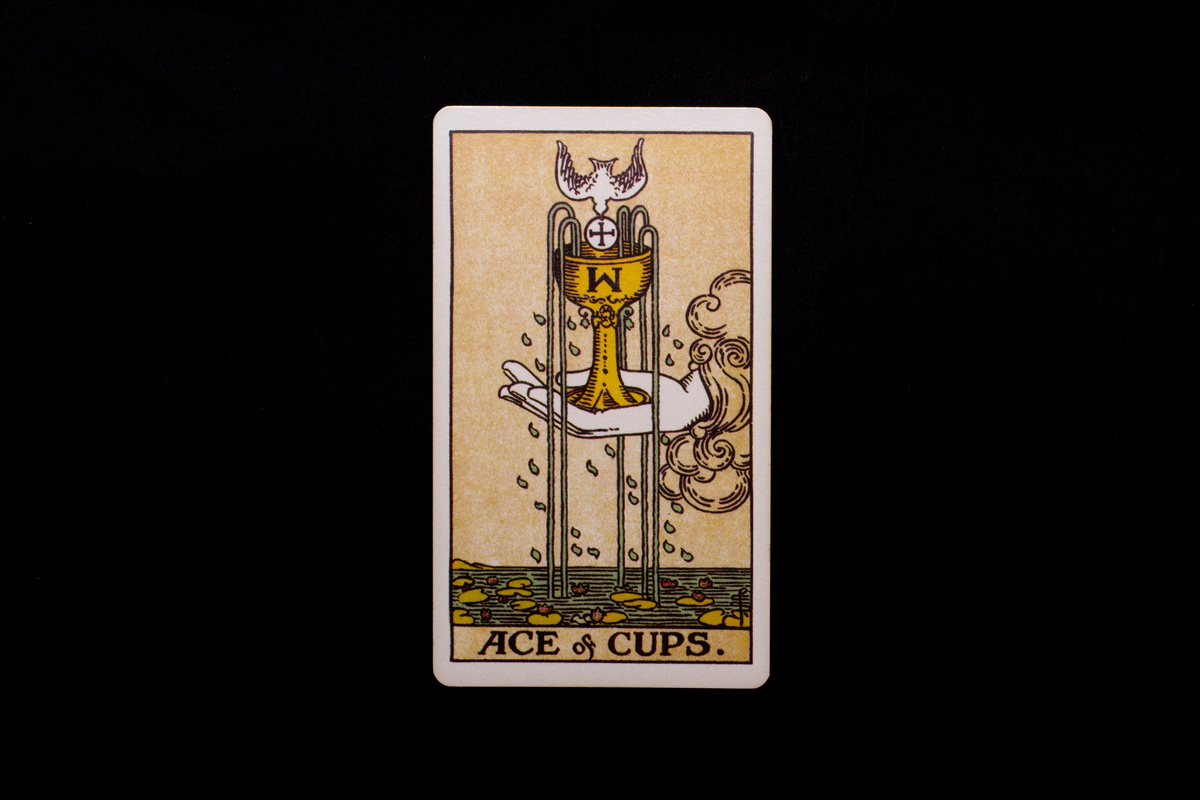
In the mythological Tarot, the suit of Cups of the minor arcana is considered very positive, being attenuator of negative messages from other cards. The element corresponding to this suit is water, with the myth of Eros and Psyche of mythological reference used. Check the meaning of the suit of Cups in the mythological Tarot, as well as details of its iconography.
Meaning
In a Tarot reading, the suit of Cups in the minor arcana brings what is related to intuition and the unconscious, as well as emotional aspects such as love and other human relationships. This suit corresponds to the element of water and its symbol, the cup, is related to the heart.
Through the telling of the legend of Psyche and Eros, the mythological Tarot depicts the maturing of feelings. It refers to the subjective reactions that result from a lower or higher level of sensitivity.
Unlike the long journey of the major arcana, the suit of Cups has as its main and specific focus the human heart and all its underlying aspects.
Iconography
Formed by ten cards (from the Ace to the 10 of Cups), this suit brings figures that represent the legend of Eros and Psyche in Greek mythology. In the Ace of Cups, a beautiful woman is portrayed emerging from the sea while holding a large golden cup. This is Aphrodite, the goddess of love and all its aspects.
In the 2nd of Cups we have the first meeting between Eros and Psyche, and in the 3rd of Cups, the marriage between the two. The 4th of Cups shows Psyche sitting in the palace of the god Eros while surrounded by her two sisters.
The 5 of Cups shows the consequences of Psyche's betrayal by her sisters' influence, while in the 6 of Cups we see Psyche solitary on a rock. The 7 of Cups represents the instructions passed on by Aphrodite to Psyche, so that she wins back the love of Eros.
The 8th of Cups, on the other hand, relates the last task that Psyche performs at the behest of Aphrodite during a trip to the underworld, in a search for Persephone's beauty cream. In the 9th of Cups, we see Psyche reunited with Eros after being rescued from the underworld. Finally, in the 10th of Cups, we have the representation of Psyche being elevated to the divine level, so that she can enter the world of the gods with her husband Eros.
Still in the suit of Cups, we find the court cards, and they are the cards of the Jester, the Gentleman, the Queen and the King of Cups. In the Jester card, we have the representation of the mythological figure of Narcissus and, in the Knight card, we see the representation of the mythological hero Perseus.
In the Queen's card, we have the representation of the daughter of Zeus and Leda, Queen Helen, while the King of Cups card, in turn, has the mythological figure of Orpheus.
Minor Arcana: Suit of Wands
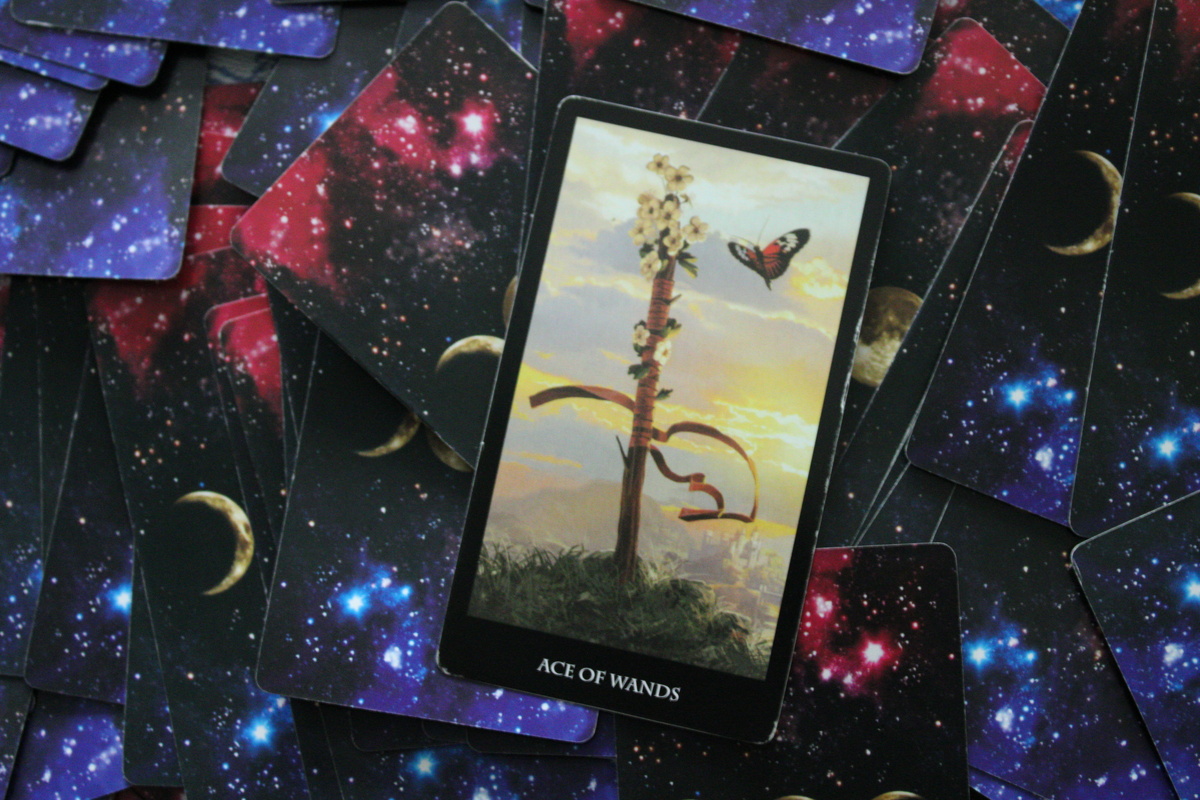
As one of the four suits that form the minor arcana, the suit of clubs has the element of fire and the characteristics arising from it. In mythological Tarot, it is represented by the story of Jason and the Argonauts, a classic that tells of an incredible journey in search of treasure.
We will see below the meaning of the suit of Wands in the mythological Tarot and also information about the iconography used in this deck.
Meaning
The suit of Wands carries a sense of will and impetus. Strength, desire, movement and speed are aspects related to fire, the element which rules this suit. Also related to fire is the transforming and volatile aspect of life, as well as the passions and desires which move human beings on their earthly journey.
If in a consultation there are many cards of this suit, it will imply a greater speed of events, or a need to take initiatives. All caution will be necessary, because often, taking action more quickly can generate impulsive and harmful acts.
This suit says much about human reflection on the relationship between each individual and his own ego, as well as the conflicts provoked by desires of the heart. The ability to find solutions, starting from levels beyond our conscious and imagination, is represented by the story of Jason in the suit of Clubs of the mythological Tarot.
It is worth remembering, in this case, that there is no card that is necessarily good or bad. Everything will depend on the point of view, as well as how each individual will face the aspects represented by the cards.
Iconography
On the first card of the suit of Wands, the Ace of Wands, we see the figure of the king of the gods, Zeus, as the initiating force of the legend of Jason and the Golden Fleece. On the 2nd of Wands, Jason is depicted pensive before the cave of Chiron, the centaur. The character wears a red tunic and holds lit torches.
Jason, newly arrived in the city of Lolkos while wearing only a sandal, is the representation of the 3 of Clubs, and in the 4 of Clubs, we see the drawing of Jason and his traveling partners celebrating the completion of the construction of the ship Argo, which would take them on their incredible journey.
The card 5 of Wands represents the fight between Jason and the dragon guarding the Golden Fleece, while the 6 of Wands shows Jason victorious after defeating him, finally raising the Fleece.
In the 7 of Clubs, we have the fight between the king of Colchis, Aetes, against Jason, and the 8 of Clubs shows Jason's escape from the enraged king. The 9 of Clubs shows the final trial of Jason and his Argonauts: the passage through the rocks Scylla and Charybdis.
In turn, the card 10 of Clubs represents Jason tired while standing before the wreckage of the ship Argo, with the Golden Fleece at his feet.
The card 7 of Clubs depicts Jason's fight with King Aetes of Colchis, whom he must defeat in order to take back the Golden Fleece. Jason, holding two flaming torches, fights the king, who wears a fiery red robe and holds another flaming torch.
In the card of the Shaman of the deck of Wands, we see the character Phrixus, who is also present in the legend of Jason and the Argonauts. The Knight card is represented by the mythological hero Beierophon, who killed the monstrous Chimera and tamed the winged horse Pegasus.
The Queen of Wands is represented by Penelope, wife of Ulysses of Ithaca and daughter of Icarus, while the King of Wands comes in the figure of the King of Athens Tcseus, one of Jason's travel companions in his quest for the Golden Fleece.
Minor Arcana: Suit of Swords
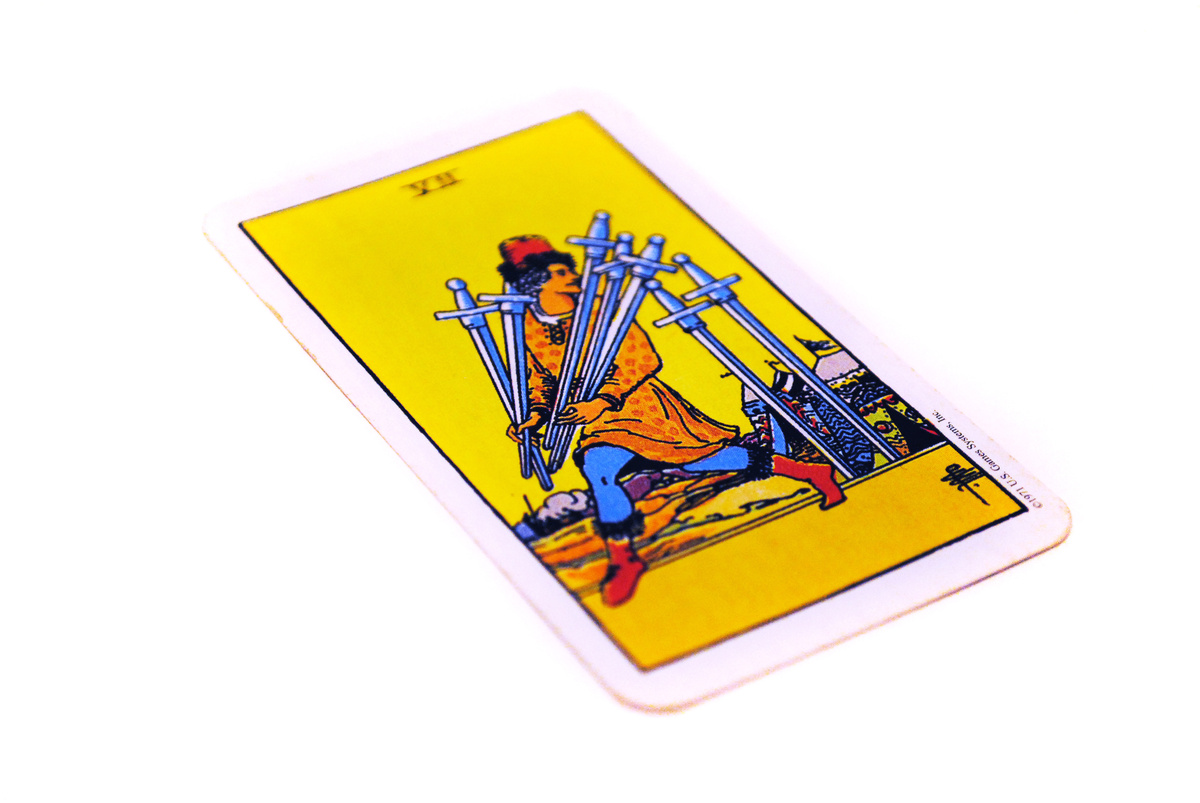
In the Tarot, the suit of Swords is related to the element of air, being a representation of the mental plane of existence.
Check below the meaning of the suit of Swords in the mythological Tarot and the proper iconography used, which uses the story of Orestes and the curse of the house of Atreus as a reference.
Meaning
The search for truth, convictions, logical coherence, as well as balance and maturity, are represented by the suit of Swords.
In the mythological Tarot, we have the dark story of Orestes and the curse of the house of Atreus. Filled with death and conflict, this Greek myth has as its main line the conflict between two extremes: the right of a mother and the right of a father. This confrontation of principles is a very propitious analogy to represent the immensely creative, but turbulent and conflicting suit of Swords.
More broadly, the suit of Swords and its cards carry a sense of representing the incredible human mind in its ability to shape its own destiny. Whether that destiny will be good or bad will depend on the strength of our own beliefs, convictions, and principles.
Iconography
We see, in the Ace of Swords, the goddess Athena, who already represents justice in the major arcana. She is in possession of a two-edged sword, representing the power of the mind to fabricate ideas and the actions that can generate not only suffering, but also good things.
The 2 of Swords brings the representation of Orestes, with his eyes closed and his hands in his ears, reflecting a state of paralysis. We see King Agamemnon murdered in his bath on the 3 of Swords, and on the 4 of Swords, the character Crestes exiled in Phocis is shown.
The 5th of Swords represents Orestes in front of the god Apollo, who tells him about his destiny and his obligation to avenge his father's death. In the next card, the 6th of Swords, we see Orestes standing inside a small boat.
We find, in letter 7 of Swords, Orestes covered by his cloak and heading for the palace of Argos. Then, in letter 8, we see Orestes with a posture of fear and his hands raised, trying to ward off his fate.
In the 9 of Swords, we have the portrait of Orestes standing with his hands covering his ears, while behind him are depicted the three Furies. The goddess Athena appears again in the 10 of Swords, having a sword in her right hand.
In the card of the Paj of Swords, we have the portrait of a young man in blue robes. This is the mythological figure of Zephyrus, ruler of the west wind.
The twin warriors, Castor and Pollux, are the representation of the Knight of Swords, while the Queen of Swords card depicts the figure of Atalanta, the huntress. Closing the suit of Swords, the hero Ulysses represents the King card.
Minor Arcana: Suit of Diamonds
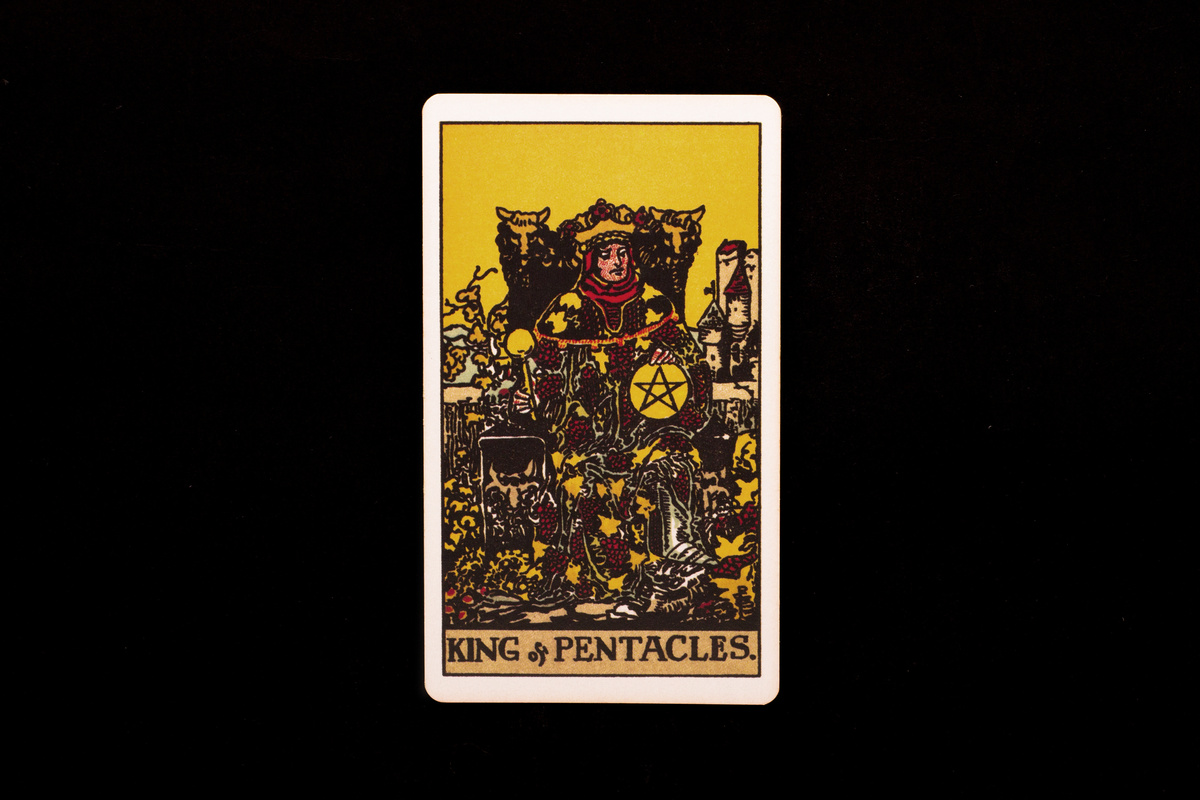
Corresponding to the earth element, the suit of Diamonds is represented by the story of Daedalus, craftsman and sculptor who built the famous labyrinth for King Minos of Crete. Check below the meaning of the suit of Diamonds in the mythological Tarot, as well as its iconography.
Meaning
The suit of Diamonds symbolizes the fruits of labor, as well as our physical body and also material goods and monetary gains. Sensuality and survival instincts are also aspects that the suit of Gold brings.
This suit tells us about our own talents, or even lack of them. It also symbolizes what shapes and defines us, just as it tells us about the material world and all that gives us confidence and security.
The reference used by the mythological Tarot, in the form of the story of Daedalus, illustrates very well the meaning of the suit of Diamonds. This character portrayed in the cards has several nuances, because, like any human being, he is neither totally bad nor good.
Iconography
We see the opponent figure of the god Poseidon represented in the card of the Ace of Diamonds. In the following card, the 2nd of Diamonds, we see the character Daedalus in his workshop. In the 3rd of Diamonds, we again see the representation of Daedalus, this time standing on a platform. In the 4th of Diamonds, we see Daedalus with four golden pentacles on his arms.
Daedalus, covered with a cloak and appearing to sneak out of the city, is the representation of the 5th of Diamonds. In the 6th of Diamonds, we see Daedalus kneeling and his hands crossed, as if in a gesture of supplication, while, in the 7th of Diamonds, we have Daedalus portrayed in the palace of King Minos.
In the 8th of Diamonds, we see Daedalus in his workshop in the palace of king Cocalos, and in the 9th card of the same suit, we see Daedalus smiling, with his hands crossed in a satisfied posture. In the 10th of Diamonds, we see Daedalus already old, with gray hair and surrounded by his grandchildren.
In the card of the Pajé of the Suit of Diamonds, we have the representation of the mythological figure of the boy Tryptolemus, son of King Celéu of Elêusis. The Knight of Diamonds brings the representation of the mythological character of Aristeu, called "Guardian of the Flocks". The Queen of Diamonds is represented by Queen Omphale, while the King's card shows the mythological King Midas, ruler of Macedonia and lover of thepleasures.
Can the mythological Tarot help me make more assertive decisions?

We must face the mythological Tarot not only as an oracle, but as a great journey of self-knowledge. The cards and their archetypes translate the essence of human experience, allowing us to see and connect with deep aspects that, consciously, we do not perceive.
When consulting the cards of the mythological Tarot, with its beautiful and interesting references to Greek myths, a door opens between the conscious and unconscious world that each one carries within himself. In this way, many relevant issues are revealed through consultations.
Aspects concerning the past and the present are revealed in a surprising way when a quality consultation takes place. When it comes to questions about the future, the mythological Tarot, through its major and minor arcana, will reveal quite specific tendencies and possibilities.
Thus, the mythological Tarot becomes a very assertive tool for decision making and can be a catalyst for great transformations in a person's life.

